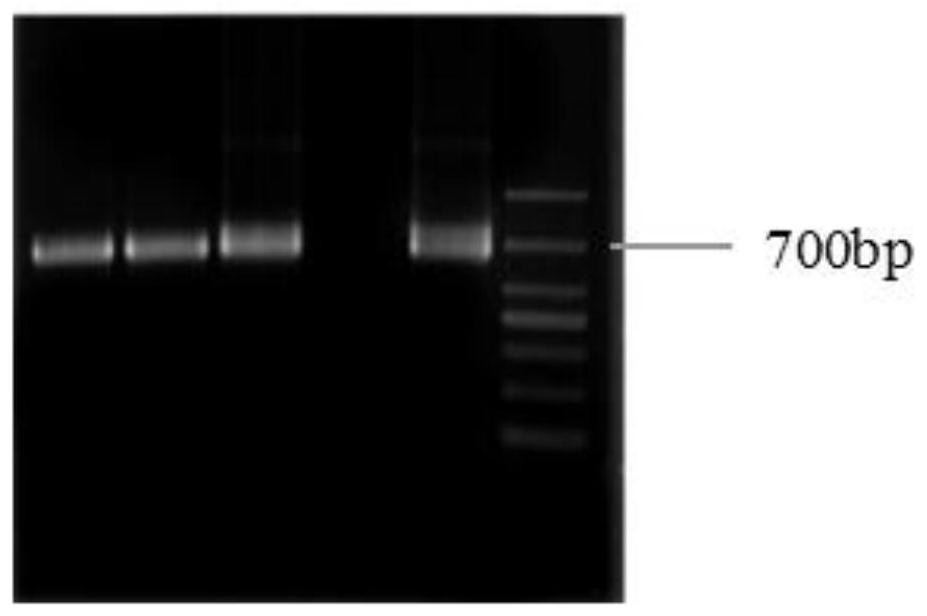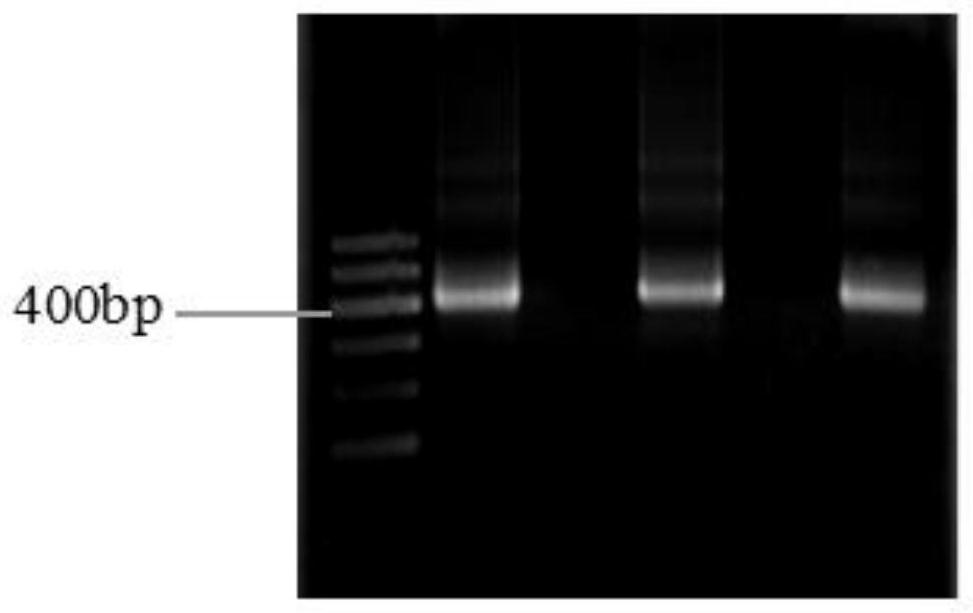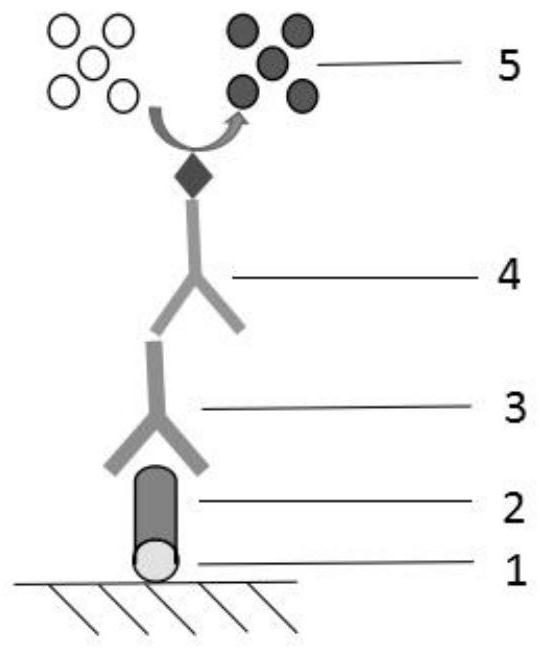Anti-CTLA-4 nano antibody, coding gene, recombinant nano antibody, recombinant vector, recombinant bacterium and application thereof
A technology of CTLA-4 and nanobody, which is applied in the field of immunology, can solve the problem of no nanobody report
- Summary
- Abstract
- Description
- Claims
- Application Information
AI Technical Summary
Problems solved by technology
Method used
Image
Examples
Embodiment 1
[0073] For the construction of natural camel-derived nanobody gene library:
[0074] Extract total RNA from camel spleen tissue, the specific steps are as follows:
[0075] ①Take out camel spleen tissue from -80°C, add liquid nitrogen to crush the sample specimen, add 1ml Trizol for every 100mg of ground tissue, and homogenize with a glass homogenizer until no tissue sample particles can be seen with the naked eye. Then transfer it to a 1.5ml centrifuge tube and let it stand at room temperature for 15 minutes.
[0076] ②According to the ratio of adding 0.2ml chloroform to every 1ml Trizol, shake vigorously for 15s, and let stand at room temperature for 3min.
[0077] ③Centrifuge the sample at 12000rpm at 4°C for 15min, and transfer the upper layer to a new Ep tube.
[0078] ④Add an equal volume of isopropanol and mix on ice for 20min.
[0079] ⑤ Centrifuge the solution at 12,000 rpm at 4°C for 10 min, and discard the supernatant.
[0080] ⑥ Add 75% ethanol prepared with 1m...
Embodiment 2
[0127] Expression and purification of nanobodies in host bacteria Escherichia coli:
[0128] (1) Ligate the Nanobody sequence obtained by sequencing analysis to the human IgG Fc segment and subclone it into the pCZN1 plasmid vector, and transform it into Escherichia coli Arctic Express. Pick a single clone on the transformation plate and inoculate it in a medium containing 50 μg / mLAmp In a test tube of 3mL LB culture solution, shake overnight at 37°C at 220rpm; (2) inoculate in 30mL LB culture solution of 50μg / mL Amp at 1:100 the next day, shake at 37°C at 220rpm until the cell OD600 is 0.6-0.8, add IPTG to a final concentration of 0.5mM, shake overnight at 20°C and 220rpm to induce expression of the fusion protein; (3) collect the bacteria and perform ultrasonic disruption to obtain a bold liquid of the inclusion body protein, which is then affinity-purified by a Ni column to obtain the fusion protein. Figure 4 It is the westernblot diagram of the purified anti-CTLA-4 nanobo...
Embodiment 3
[0130] Specificity verification of anti-CTLA-4 nanobody D11:
[0131] The CTLA-4 antigen and activated human T cells were used for western blot (the primary antibody was purified anti-CTLA-4 nanobody D11, and the secondary antibody was anti-human IgG Fc / HRP). Figure 5 Middle lane 1 is the whole protein of activated human T cells, lane 2 is the whole protein of 293T cells without CTLA-4 expression, and lane 3 is the CTLA-4 antigen. This shows that the anti-CTLA-4 nanobody D11 provided by the present invention can specifically recognize the CTLA-4 antigen.
PUM
| Property | Measurement | Unit |
|---|---|---|
| affinity | aaaaa | aaaaa |
Abstract
Description
Claims
Application Information
 Login to View More
Login to View More - R&D
- Intellectual Property
- Life Sciences
- Materials
- Tech Scout
- Unparalleled Data Quality
- Higher Quality Content
- 60% Fewer Hallucinations
Browse by: Latest US Patents, China's latest patents, Technical Efficacy Thesaurus, Application Domain, Technology Topic, Popular Technical Reports.
© 2025 PatSnap. All rights reserved.Legal|Privacy policy|Modern Slavery Act Transparency Statement|Sitemap|About US| Contact US: help@patsnap.com



